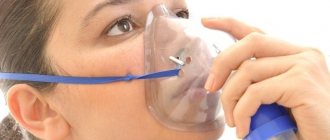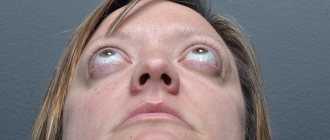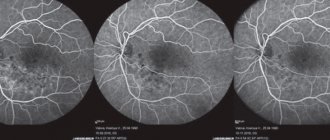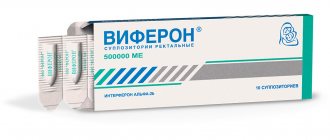Author:
- Khirnetkina Ayuna Fedorovna
otorhinolaryngologist, otoneurologist, audiologist
5.00 (Votes: 2)
Halotherapy is a non-drug treatment method based on the use of an artificial microclimate, similar in parameters to the conditions of underground salt caves. The main active factor of the method is an aerosol of salt, so the method was called “halotherapy” (“hals” - Greek “salt”).
Halochamber or caving chamber?
Speleotherapy and helotherapy are a certain type of climatotherapy, that is, without leaving the locality, the patient has the opportunity to improve his health. They pursue the same therapeutic goal, but have some technical differences. Thus, the speleological chamber consists of natural blocks of potassium salts containing KCl, Na, Mg, which are mined in special quarries and caves. Depending on the place of extraction, the concentration of chemical elements may differ slightly.
The halochamber owes its therapeutic effect not to salts, but to the halogenerator, which grinds table salt into an aerosol. It is this aerosol that fills the halochamber. The walls, ceiling and floor of the chamber are treated with a spray of table salt, not for medicinal purposes, but rather to create a pleasant atmosphere. A speleo chamber is preferable from this perspective, since in this case the walls are also treated - the entire room is lined with salt blocks.
The therapeutic effect of speleoclimatotherapy is more effective than halotherapy. But this does not mean that the halochamber is useless. Air saturated with sodium chloride ions helps saturate the blood with oxygen, strengthens the immune system, renews the skin, improves hair structure, wounds and scratches heal much faster, that is, the body’s ability to regenerate increases.
In addition to the main feature of the halo chamber - salty air saturated with ions, a constant level of humidity and air temperature are also maintained in the room, which creates a comfortable microclimate.
A little about the history of halotherapy
Attempts to reproduce the microclimate of salt hospitals (halite, sylvinite) in terrestrial conditions have been made since the mid-80s of the 20th century. As a result, “halochambers” were created - these are rooms with an artificial microclimate, close to the microclimate of natural salt caves, while maintaining and controlling a certain temperature, humidity, aerosol dispersion, and concentration of hydroaeroions.
Clinical observations have shown that a highly dispersed aerosol of rock salt stimulates the protective mechanisms of the respiratory tract, has a mucolytic, bronchodrainage effect, has an anti-inflammatory and immunomodulatory effect, and increases the resistance of the mucous membrane to infection.
Who is prescribed halotherapy?
Halotherapy courses are prescribed to patients with certain problems of the respiratory system:
- diseases of the ear, nose and throat area - pharyngitis, bronchitis, sinusitis, as well as pneumonia;
- colds that worsen 3-4 times a year;
- bronchial asthma;
- cardiovascular disorders (prescribed for recovery after a heart attack, stroke);
- helps normalize blood pressure, that is, halotherapy is indicated for both hypertension and hypotension;
- varicose veins (thin the blood that is too thick);
- nicotine addiction;
- skin problems (psoriasis, dermatitis, eczema, acne);
- bronchial type allergies;
- living in an area with an unfavorable environment or working in a hazardous industry;
Halotherapy is also prescribed for frequent stress, panic attacks, and insomnia.
A visit to the salt room shows amazing results. Thus, patients with asthma or bronchitis note a general improvement in their condition in 76%, with skin diseases - in 92%, exacerbation of allergic reactions to pollen decreases in 89% of patients, constant fatigue syndrome and depressive states go away in 94% of cases. Reviews from doctors confirm these statistics.
Patients with nicotine addiction after just a few procedures notice a slight weakening of the craving for cigarettes, the lungs are cleared of accumulated harmful deposits, inflammation of the lung tissue is relieved, and subsequently an aversion to nicotine appears. The psychological impact on the smoker is also important - the opportunity to breathe clean air and compare it with cigarette smoke. Of course, not all smoking patients quit this bad habit, but their lung condition improves significantly.
Considering the main therapeutic effects of halotherapy, the indications for this type of exposure are as follows:
- Chronic nonspecific lung diseases in a sluggish form with frequent exacerbations and unstable remission (chronic obstructive bronchitis, bronchial asthma, chronic pneumonia, bronchiectasis, emphysema, chronic abscess).
- Residual effects of pneumonia and bronchitis.
- Allergic phenomena.
- Cystic fibrosis, developmental anomalies of the bronchopulmonary system.
- Rhinitis, pharyngitis, laryngitis, tracheitis, rhinosinusitis.
- Occupational diseases of the respiratory system, pneumoconiosis.
- Psoriasis in remission.
- Allergic dermatitis, neurodermatitis.
- Acne.
- Seborrhea.
- Eczema.
- Frequent colds.
- Psycho-emotional instability.
- Vegetovascular dystonia.
- Increased level of stress in the patient's environment.
A course of treatment
The number of procedures and the time of visiting the halo chamber are determined by the attending physician in accordance with the general health of the patient and his needs. The first procedures should be short-term in order to identify possible signs of individual intolerance to ionized air or salt impurities. Such signs may include dizziness, a feeling of lack of air, and claustrophobia (panic attack). With asthma, a coughing attack can be triggered.
At the first sign of discomfort, you must immediately leave the halochamber.
The condition of patients who visit the halochamber for the first time must be observed for 10 minutes. This is exactly how much time the body needs to adapt to new climatic conditions. In the absence of any negative reactions, the halotherapy procedure gradually increases to half an hour.
The number of procedures depends on the patient's condition. A course of halotherapy usually consists of 10-25 visits. If necessary, the course can be repeated, but with an interval of 6 months.
Depending on the duration of the course and the duration of the procedures, the cost will be determined. For example, the price of one visit to a halochamber can vary from 200 to 600 rubles. At the Center for Respiratory Medicine in Moscow (address: Losinoostrovskaya str., 39, building 2) you can undergo both a therapeutic course of halotherapy and speleotherapy sessions.
Mechanisms of action on the body
Stimulation of epithelial cilia,
lining the respiratory organs. Air ions have this effect. With increased work of the ciliated epithelium, the discharge of sputum along with pathogenic flora accelerates.
Increasing osmotic gradient
Sodium chloride (NaCl, salt) is a component used to prepare saline solution. Salt allows you to balance the osmotic pressure: excess water does not enter the cells through the membrane and the necessary water does not leave. NaCl acts in a similar way in a dry aerosol: entering the bronchi, salt stimulates the flow of fluid into the lumen of the bronchi, water from the mucus is released into its outer layer, and clots come out faster.
Stimulation of local immunity
Small fractions of salt, charged with negative ions, penetrate deeply into the respiratory tract and stimulate the protective forces of the respiratory system. This is the particular benefit of halotherapy for adenoids and respiratory diseases.
Reducing bronchial edema
Salt draws fluid from the vessels into the lumen of the bronchi
Contraindications
Such a pleasant treatment method in all respects as halotherapy has both indications and contraindications. You should not decide on your own to undergo a course of halotherapy. An appointment can be obtained from doctors such as a therapist, physiotherapist, otolaryngologist, pulmonologist.
Children are prescribed by a pediatrician. Halotherapy can be an addition to basic drug treatment or be part of physical therapy. Even such a harmless method as inhaling ionized air has a number of contraindications that prevent you from visiting the halo chamber:
- malignant tumors;
- various complications in the form of purulent discharge;
- acute blood diseases;
- bleeding;
- venereal diseases;
- tuberculosis;
- chronic infectious diseases;
- hyperthermia;
- kidney diseases;
- pregnancy;
- psychical deviations;
- claustrophobia;
- drug addiction and alcoholism.
Before visiting the salt room, you must consult a doctor. At the Center for Respiratory Medicine, the doctor will help identify possible contraindications and also explain the specifics of the procedure. For example, such features include the time spent in the halochamber and the type of clothing in which one can enter there.
Before using the halo chamber and starting air salt procedures, it is recommended to change into special clothes or throw a casual robe or sheet over it. Salt, which is saturated in the air, tends to settle on any surface, including clothing, which can become damaged. You also need to change your shoes - salt can corrode the sole.
Salt cave: indications and contraindications
Salt is an antiseptic. Helps the mucous membrane cope with viruses and provides preventive protection.
Salt cave: indications
Salt treatment is recommended as an additional therapy for the following problems:
- respiratory manifestations: viral infections, runny nose and cough, nasal infections, bronchitis, asthma, ear infection;
- allergies, flowering periods of plants, environmental pollution: allergic rhinitis (animals, dust, grass), street dust, poor indoor air quality caused by old air conditioners, smoking and the habit of being near smokers;
- skin diseases: atopic skin dermatitis, psoriasis, skin rash, pimples, acne.
Salt cave: contraindications
Salt therapy is a safe form of treatment. But in rare cases, even this is not recommended. For example, when there is serious heart and kidney disease, lung cancer is detected. The period of exacerbation of any chronic diseases, high temperature, claustrophobia are also direct contraindications to undergoing the procedure.
Salt cave: principle of operation
The halochamber imitates a natural salt mine located deep in the earth's crust. The microclimate in the salt cave is ionized and saturated with natural substances of low concentration of highly dispersed aerosol of dry solution (salt). It is formed naturally by convective diffusion (transport of particles in the atmosphere) from the salt wall, and when combined with controlled temperature and humidity, it simulates a cave, which creates a hypobacterial and allergen-free air environment. When you inhale, salt ions pass through the sinuses and respiratory tract, thus killing pathogenic bacteria.
There are three ways to treat with salt: the first is by placing large amounts of salt or salt bricks in the room. This method of therapy is not effective because enough salts with the correct particle sizes do not evaporate for effective treatment. The patient will have to spend several hours in such a cave to feel the positive effects.
The second method is wet salt therapy. In this case, the saline solution is evaporated into the atmosphere of the room in which the patients are located. Although this is more useful compared to the first method, but the treatment occurs only in the upper respiratory tract, moist particles will not enter the throat and will not reach the deep part of the lungs, as well as the paranasal sinuses, which means that they will not reach the place where exposure to salt will be most necessary.
It is better when halotherapy is carried out using a dry salt aerosol. The salt room creates an optimal concentration of salt in the air, the particle size of which easily penetrates the lungs. Therefore, several days on the beach will be less effective compared to staying in a salt cave, where the client inhales dry aerosol salt sprayed by special installations.
What salt is used in the caving room?
Sodium chloride (NaCl) is an essential component of any caving room.
It is he who is responsible for the therapeutic effect on the body. Therefore, rock salt is often used for wall cladding (it contains 61% Cl and 31% Na). Sea salt contains iodine and bromine, which can cause allergies in visitors. Therefore, sea salt is not used for cladding rooms. The concentration of sodium chloride is measured with a special device. For a visit to the chamber to have a positive effect, the readings should not be less than 5 mg of salt per cubic meter of air.
How does a halochamber work?
For healing and treatment, 2 types of salt rooms are used - halochambers lined with halite slabs with sodium chloride, and speleological chambers with blocks of sylvinite containing potassium salts. Special ventilation equipment actively pumps air through the pores of the salt slabs, saturating it with microparticles of salt.
A stable microclimate is maintained in the room - the temperature varies from +18 to +23°C, humidity does not exceed 50%. Comfortable healing and relaxation sessions take place accompanied by soft music.
Features of salt air treatment
After visiting the salt chamber, your cough, runny nose, and temperature may increase slightly. Don't be alarmed: this is a normal reaction of the body to salt particles. With the help of a cough, the lungs and bronchi will quickly clear phlegm and mucus. Accelerating blood circulation will help remove toxins from the organs, negative ions will prevent harmful bacteria from multiplying and help in the fight against viruses.
A visit to the cave chamber during the ARVI and flu season will help strengthen the immune system and avoid infection.
Author of the article:
Shimko Valeria Eduardovna, general practitioner.
Rules and frequency of visiting the halo chamber
Halotherapy sessions last from 30 to 60 minutes, and it is not advisable to take breaks between them for more than 2 days. For allergy sufferers and asthmatics, the time spent in the chamber may be increased.
The visiting rules for adults and children are the same - you should refrain from eating for half an hour before and after the session, water procedures are allowed only 2-3 hours after its end.
Recovery in a salt room is especially effective during seasonal epidemics of influenza and ARVI.
Important! Before visiting the halo chamber, be sure to consult your doctor and find out about possible contraindications.
The benefits of halotherapy: what does the halochamber treat?
The healing properties of salt grottoes were known back in the Middle Ages. Healers often sent their patients with respiratory diseases to such caves. True, the healing power of speleotherapy was proven only in the 19th century. Scientists noticed the absence of asthma, lung and bronchi diseases in miners who mined salt.
One of the key features of the air in the halochamber is the saturation of oxygen with ions (almost like during a thunderstorm) and the absence of bacteria and viruses.
One session of halotherapy can replace 4 days of staying on the seashore. Visitors to halo chambers already after the first procedure note a decrease in the level of fatigue and an improvement in mood. Several sessions of climatotherapy give the following results:
- Hemoglobin increases;
- Blood circulation improves;
- Immune processes in the body are activated;
- The emotional state stabilizes;
- The bronchi and lungs gradually get rid of bacteria and viruses;
- Hormonal levels return to normal;
- The level of anxiety decreases;
- Increased concentration;
- Blood pressure decreases;
- Metabolism improves.
The patient's recovery occurs without the use of medications or medications, which further increases the value of salt treatment and reduces the number of contraindications.
Indications
Doctors recommend climatotherapy for the following diseases and conditions:
- Predisposition and presence of diseases of the ENT organs: asthma, pneumonia, pharyngitis, sinusitis, sinusitis, bronchitis, etc.;
- Digestive problems;
- Incorrect functioning of the thyroid gland;
- Skin diseases: psoriasis, eczema, dermatitis, etc.;
- Various allergies;
- Diseases of the cardiovascular system;
- The rehabilitation period after a stroke;
- Atopic dermatitis;
- Inflammations on the skin;
- Overweight.
Speleotherapy is also indicated for people with strong immunity for the prevention and maintenance of health.









